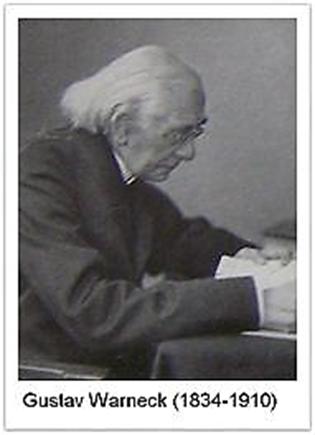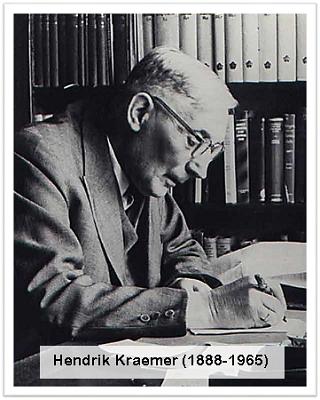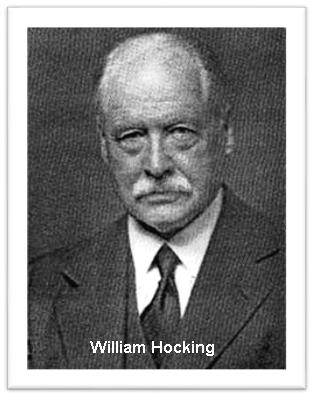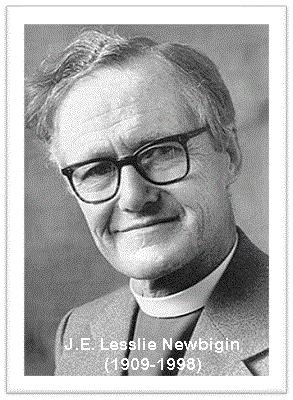Christian Mission and World Religions
Christian Mission and World Religions

This study will consider the theology of religion or theologia religionum if three missiologists in the Protestant tradition: the German missiologist Gustav Warneck, the Dutch Indologist Hendrik Kraemer and the English/Scottish missionary Lesslie Newbigin. Together, their thought on the theology of religion spans the entire twentieth century. The emphasis of this study lies on the development of their thought in the context of their time, their Ideengeschichte.
Since the 1980s, the paradigm put forward by Alan Race which distinguishes between exclusivism, inclusivism and pluralism has become generally known. This model has been widely accepted in the theology of religion and has spawned many variations. The context in which the three main figures in this study worked is explored in the descriptions and analysis of the discussions these three men pursued with others. Warneck entered into a conversation with Ernst Troeltsch and Wilhelm Bousset as representatives of the Religionsgeschichtliche Schule. In his main work, Kraemer addressed the position of William E. Hocking of the Laymen’s Inquiry (Re-Thinking Missions) and entered into conversation in Tambaram about the key points of the theology of religion: the value of the non-Christian religions, the presence of divine revelation in religions, the exclusivity of salvation in Christ and the relationship between particularism and universalism. Newbigin had exchanges with pluralists like John Hick and Paul Knitter. Their thinking is placed in the context of twentieth-century developments in the theology of religion. This study makes use of primary and secondary sources.
Gustav Warneck⤒🔗
In the second chapter the theology of religion of the Evangelical Lutheran missiologist Gustav Warneck (1834-1910) is discussed, who was the first to publish an academic missiological handbook and organised many regional missions conferences in Saxony before his appointment as professor of ‘Missionswissenschaft’ (missiology, theology of missions) at the University of Halle-Wittenberg (1896). Warneck was the founder of the Allgemeine Missions-Zeitschrift (AMZ) which was published from 1874 to 1923. His main work is a missiological handbook entitled Evangelische Missionslehre (3 parts, 5 volumes), which had a great influence on missiology in Western Protestantism. His influence on the thought of the Roman Catholic missiologist J. Schmidlin is considerable. As a historian, Warneck published a brief history of missions (Abriss einer Geschichte der protestantischen Mission) which saw many reprints. By means of reports and stories, Warneck tried to keep the idea of missions alive in the Evangelical Lutheran Church in Saxony so that every congregation would become a ‘Missionsgemeinde’.
Warneck bases missions in Christ’s command and in the eternal purposes of God. For Warneck, the foundation of missions is biblically and theologically justified in dogmatics, ethics and the Scriptures of the Old and New Testaments. He sees church planting as the aim of mission work. He considers the expansion of Christianity important because it can lead to a spiritual development and bring the kingdom of God closer. Warneck asserted that God’s salvation has a universal objective and he also saw a close connection to the church’s commission to make that salvation known to all. God’s salvation is personal, and can only be obtained through faith in Jesus Christ.
‘Original’ Religion←⤒🔗
Warneck’s theology of religion is characterised by the notion that all religions relate in some way to the ‘original’ religion founded on revelation from God. Religions came about through emancipation and, according to Warneck, must be regarded more or less as ‘pathological’ manifestations or deviations from the ‘normal’ religion, which is true service of God. Christianity holds the revealed truth of God. After building the Tower of Babel, the true knowledge of God vanished. From the calling of Abraham until Pentecost, God revealed Himself only to the people of Israel. From the beginning God’s purpose was the salvation of all peoples and He is realising his universal purpose by means of church missions. Christianity is the absolute religion because it holds the full revelation of God. Christianity has a task in the world to share the salvation of God with others. If all adherents of other religions convert to faith in Jesus Christ by means of church missions, the universal purpose of God with His world will be accomplished when all have converted to Christ.

Warneck disputed with Ernst Troeltsch (1865-1923) and Wilhelm Bousset (1865-1920) about the place and significance of Christian missions. Troeltsch saw Christianity as the absolute (in the sense of highest possible) religion for Western, European-American culture. The role of missions was to lead other religions to a higher cultural level. Troeltsch argued that missions were not only supposed to bring ‘conversion’ and ‘salvation’, but also to develop and elevate them. Warneck criticised Troeltsch’s missionary motives. He emphasised that the call to repentance applied to all religions and opposed Troeltsch’s positive assessment of the ‘way of salvation’ in Buddhism. In the discussion that followed, Troeltsch made a distinction between ‘old’ missions and ‘new’ missions. For the ‘ältgläubige Mission’, to which he ascribed Warneck and others like him, Troeltsch still saw a grand task, namely the further Bildung of the ‘higher’ cultures and religions. Missions are not aimed at salvation and conversion of the other religions, but at elevating and developing social life by means of the exalted elements of Western Christian culture. Troeltsch admitted that he and Warneck had different concepts of salvation. The highest purpose of Christianity is the inward spiritual formation of a Menschheitsgemeinschaft. The discussion between Warneck and Troeltsch went straight to the heart of Christianity. Warneck allowed a limited influence from other religions on Christianity. He could not entirely free himself of the deepest thoughts of the Religionsgeschichtliche Schule.
Divine Revelation←⤒🔗
Bousset believed that there was divine revelation in all religions. He was in favour of a free exchange of religious elements between religions. He admitted that the concept of salvation was the strongest and most visible in Christianity. Warneck opposed Bousset’s essentially equating the other religions with Christianity. This opposition arose from a difference in appraising the value of the revelation, which was not identified as such by Warneck. According to Bousset, Christianity itself was a syncretistic religion which had incorporated elements from other religions. However, no religion came out on top of Christianity. He saw a modest role for missions in national development.
In 1996, an international symposium was held in Halle on the relevance of Warneck’s missiology in the present day. His significance in the development of missionary theology has not lessened over the past century, though his practical methods of approach are dated. He is rightly called the missions teacher of the church. Warneck’s influence on the missiology of Joseph Schmidlin is demonstrable to the smallest detail. Although Warneck admitted that Protestant missions had had little success in the past in the Islamic Middle East, he held firm to the duty of evangelising Muslims. He was waiting for the time when a door would open to missions within Islam. The significance of Warneck’s missionary theology is generally recognised by many Reformed and Evangelical Christians. His view of the history of religion and culture, however, is rejected as bearing too much resemblance to the basic ideas of the religious historians. He did not make sufficient distinction between revelation and historic Christianity and was too prone to regard Eurocentric Christianity as the absolute form of Christianity.
Hendrik Kraemer←⤒🔗
The third chapter describes and analyses the theology of religion of the religious scholar Hendrik Kraemer (1888-1965), who was educated as an Indologist and sent to the Dutch East Indies by the Dutch Bible Society as a linguist and advisor for Bible translation. He also served as an advisor to the mission organisations and acquired considerable knowledge of the world religions (Islam, Hinduism and Buddhism). Kraemer wrote a preparatory study for the IMC conference in Tambaram in 1938, The Christian Message in a Non-Christian World. At that time he was a professor of the history of religion at Leiden. In the period before, during and after the Second World War, Kraemer was active in church restoration in the Dutch Reformed Church as a member of the church edification committee. From 1947 until his retirement in 1955, he led the Ecumenical Institute of the World Council of Churches in Bossey, Switzerland. He worked with an array of international groups on the renewal of the church with a view to its calling in the world.

Kraemer’s missiology is defined by his term ‘Biblical realism’, which he uses to indicate his view of how the relationship between reality and God’s revelation is structured. The term functions as a method of theological thinking, but has a wider definition than ‘worldview’. God reveals Himself in the Bible, giving humanity a means to explain reality. The term ‘Biblical realism’ is, for Kraemer, practically synonymous with ‘gospel’: God revealed his unique and definitive salvation by sending His Son. On the basis of his Biblical realism Kraemer argues for a fundamental discontinuity between divine revelation and human religiosity. He makes a distinction between religions of revelation and ‘naturalistic religions’ or ‘religions of self-realisation’, which are comprehensive belief systems. Kraemer received considerable criticism of his Biblical realism in Tambaram. Later he stopped using the term, but always defended what it stood for.
In his missiology, Kraemer made a case for the revaluation of church missions. He called attention to the missionary ethic, especially in connection with the relationship of the attitude of missions and the personal conduct of the missionary. All his life, Kraemer wrestled with the problem of syncretism, the ‘illegitimate mingling of different religious elements’. He believed that all naturalistic religions were developed by a syncretistic process. In Christianity, every form of syncretism is rejected. He uses various terms for syncretism: from amalgamation to adaptation, absorption, accommodation and assimilation. Christianity can incorporate cultural elements and express its faith experience in received cultural forms, but cannot introduce religious notions from sources other than the revelation of God. At the end of his life, he pleaded for a new form of missions in religious encounters: dialogue.
Kraemer’s theology of religion is characterised by his Biblical realism. On that basis he makes a distinction between religions of revelation, among which he reckoned Judaism, Christianity, and to a certain extent Islam, and the religions of self-realisation. From Karl Barth he learned that all religion is unbelief because there is a complete discontinuity between the revelation of God as the unique source and norm of Christian faith, and all human religion. Later, under the influence of Emil Brunner, he admitted some form of continuity between religion and revelation: there could be traces of revelation in the non-Christian religions. The religious experience is the human correlative to the initiative of divine revelation. The only form of continuity between Christian faith and the other religions is the figure of the missionary. Kraemer took a position in the controversy between Barth and Brunner over the ‘points of contact’. He accepted Calvin’s perception of sensus divinitatis. In that regard he concurred with Brunner’s concept of general revelation, the susceptibility of humanity to God’s initiative of revelation, and the value of natural knowledge of God. He maintained that the revelation of God in Christ is suigeneris.
In Tambaram, Kraemer came under fire primarily for his understanding of revelation. He accepted a certain form of general revelation, but limited its scope due to his assumption that all revelation is revelation of the word. Over the years, Kraemer drew criticism from T.C. Chao, P. Chenchiah, William Anderson and Alfred Hogg, among others, who assumed that there was divine truth and revelation in the non-Christian religions. Kraemer disputed with N. Söderblom, J.N. Farquhar, H.H. Farmer and F. Heiler about the praeparatio evangelica and the meaning of the term ‘fulfilment’ in the theology of religion. He engaged with Clement of Alexandria about the possible presence of the content of revelation in the other religions (logos spermatikos). He does not deny that the religions could serve a function in the process of seeking, while Christianity would then be the religion of ‘finding’. Through his consistent concept of discontinuity, Kraemer concluded that the other religions could never be a preparatory path to salvation in Christ.
Historical Phenomenon←⤒🔗
About Christianity as a historical phenomenon, Kraemer speaks exclusively in relation to the criterion of revelation. Christianity can never be a totalitarian system of thought, but is unique in possessing the criterion of evaluation of religion. The person of Jesus Christ, who is the revelation of God, is the only evaluator of religion and religions, including Christianity. D’Costa criticised Kraemer’s absolute Christocentric concept of revelation because it would open an unbridgeable chasm between nature and grace and deny the means of salvation to millions of non-Christians through no fault of their own. In his view, Kraemer showed insufficient acceptance of the presence of truth and God’s self-revelation outside the Christ episode. Key concepts for Kraemer were ‘universality’ and ‘particularism’: salvation is obtained only through Christ, but is meant for everyone. He disagreed with Origen’s view that salvation is available to all (doctrine of the apokastasis) and with Schleiermacher’s doctrine of God’s universal will to save. He embraced the notion of kerygmatic universality in the sense that the gospel had to be made known to everyone. This is the duty of the church and follows from his soteriology. However, Kraemer cannot be called a salvation agnostic because he was unable and unwilling to answer the question of who ultimately would be saved.

William Hocking←⤒🔗
Kraemer’s study for Tambaram was one great attack on William Hocking’s Rethinking Missions: A Layman’s Inquiry After One Hundred Years, in which the contours of Hocking’s attempt at a single world religion were already taking shape. Hocking believed that all religions have knowledge of the same God and show unity in essence. The role of missions, according to him, was to promote the unity of all religions and foster unity in cultures. Christianity would have to be transformed from a world faith to a world religion. Kraemer observed that this view meant the end of missions and that the formation of one world religion would imply the disappearance of Christianity. In keeping with Hocking, Hogg stated that truth and saving knowledge of God were present in the non-Christian religions because, he said, the content of revelation was universally present to a certain point. Kraemer’s concept of revelation has received heavy criticism since Tambaram in 1938, but has not been substantially enlarged or elaborated upon. He maintained the clear and decisive criterion of Christ as the definitive and unique revelation of God in connection with obtaining salvation.
In the space of fifty years, Kraemer’s Tambaram legacy has been evaluated at several conferences. Philip Potter argued that God’s creative and saving work encompasses all people and that Biblical realism can no longer serve as the evaluation criterion for religion and religions. Stanley Samartha also parted ways with Kraemer because in his view, the presence of revelation in all religions was a ground for assuming that saving knowledge of God or certainty of acceptance by God must be assumed for sincere non-Christian believers. He rejected Kraemer’s Christology, or ‘Christomonism’, and chose instead a ‘theocentric approach’. M.M. Thomas criticised Kraemer on the point of the latter’s rejection of any form of syncretism in Christianity. He underlined the need for adaptation of the gospel to the individual cultures. On the basis of a dialogue with the culture, the Christian faith had to be expressed in the authentic forms of that culture. C.F. Hallencreutz and W. Cantwell Smith stated that they disagreed with Kraemer in wanting to replace missions with a form of dialogue on the basis of full equality. Hallencreutz made the same choice on the basis of another epistemological distinction. Cantwell Smith believed that Kraemer was working from an obsolete thought system, and Diana Eck also said that Kraemer’s frame of reference was outmoded because, she said, in that case all people outside of Christian revelation would by definition be outside salvation in Christ.
Lesslie Newbigin←⤒🔗
Lesslie Newbigin, in his evaluation of the religions, shared Kraemer’s frame of reference. He emphasised that missions were the responsibility of the whole church. Newbigin criticised Kraemer on the point of the presence of divine revelation in the non-Christian religions. During a symposium in Oegstgeest in 1988, Wesley Aria rajah dismissed Kraemer’s notion of discontinuity, because he said that the light of God’s general revelation shines through human cultural traditions, which can be effective as a point of contact for the special revelation in Christ. He assumes the presence of saving revelation in all religions. Dirk C. Mulder also rejected Kraemer’s dialectical speaking of religion and religions on the basis of Biblical realism because it must lead to declaring all religions to be religio falsa. He argued that Christianity was mutable, and that Kraemer’s Christology was not pluriform enough. Armand Garon considered that Kraemer’s negative evaluation of all human systems of thought could never be accepted by adherents of other religions, because they would not give divine revelation the same central place that Kraemer does. On the basis of research Jan Slomp concluded that Kraemer, despite his new initiatives in connection with dialogue as a modern-day method in missions, never changed his view. He found Kraemer’s assessment of Islam one-sided because Kraemer analysed it starting from the system of Islam (as a political phenomenon and legal religion), in which divine revelation was identified with Islamic law. He believes that Kraemer’s interpretation of Islam was hampered by insufficient knowledge. Slomp turned away from Kraemer’s exclusivist assessment of Islam from the point of view of Christian revelation in preference of new theological designs.
Alan Race, Gavin D’Costa and Paul Knitter also rejected Kraemer’s principle of discontinuity. They argue that Kraemer’s Christology contains more historical elements and was not, as Kraemer intended, exclusively based on revelation. D’Costa believed that Kraemer’s attitude to non-Christian religions was too negative. All three either deny the suigeneris character of Biblical revelation or furnish it with more historical aspects and other possibilities of interpretation.

In the fourth chapter, I turn to the missionary theology and theology of religion of J.E. Lesslie Newbigin (1909-1998), who was active for many years in southern India, first as a missionary and later as a bishop of the Church of South India.
After that he served as general secretary of the International Missionary Council (1959-1965) and was Bishop of Madras in the Church of South India (1965-1974). After his retirement he taught missiology, ecumenics and Hinduism in Birmingham and served the United Reformed Church congregation in Winson Green, Birmingham for eight years. From 1988 to 1992 he was active in the Gospel and Our Culture Movement and until his death he continued to give lectures and write articles. During his time in India, the prevailing question was ‘Why missions?’ After 1974 another problem arose: what can we believe and why? The significance of Newbigin lies, for the first period, in the area of missions and Bible study. As a missiologist and ecumenicalist, he had great significance for the promotion of missions, especially the ‘mission to the West’. As a historical theologian, he was influenced by Augustine’s linear view of history. His criticism of Western culture incorporates an original view of the roots of (post)modern society in the Enlightenment. From Peter Berger he borrowed the term ‘plausibility structure’ to explain the pluralism of religious society. Newbigin’s analysis of the value of knowledge, including scientific knowledge, since the Enlightenment is not easy to follow without referring to M. Polanyi’s ‘Post-Critical Philosophy’. He concluded that all knowledge is personal knowledge. All knowledge functions within a framework of belief (‘fiduciary framework’). Incidentally, the thought of Peter Berger and Alasdair MacIntyre was important for Newbigin’s analysis of truth in modern culture. Newbigin’s apologetics have an epistemological and sometimes even a philosophical character, turning on the question of what we can know and who or what has authority.
Revelation of God←⤒🔗
Newbigin’s missiology is based on the gospel as the revelation of God. In his Bible studies he explains how he reads and exposes the Word of God. His systematic elaboration of missiological themes in his book The Open Secret did not appear until he was seventy years old. The obviousness of missions is a common thread running through all his publications. He bases missions in the Missio Dei, which must be understood Christologically (cf. Kraemer). His Christology can be summed up in the expression ‘the total fact of Christ’. He was always devoted to church missions. Missions belong to the being, not just the well-being, of the church, and the church is not a function of missions (versus J.C. Hoekendijk). The missionary duty of the church can only be fulfilled if the church is aware of the validity of the Great Commission and is filled with the Spirit. The commission to make the gospel known to everyone implies the call to faith and repentance as the purpose of missions.
Newbigin regarded a dialogical encounter with adherents of other religions primarily as a means to obtain knowledge and insight into the beliefs of the other person. In 1977, he described the foundations and conditions for an encounter with adherents of other religions. The four forms of dialogue which Newbigin describes are:
- the inter-religious dialogue to become acquainted with the other’s beliefs; this form has no value as a missions method;
- the Socratic dialogue, which is intended explicitly to bring to light presuppositions, but is not suitable for inter-religious dialogue;
- the inter-religious dialogue to promote national unity; the truth of the gospel can become subordinate to political and social goals; and
- dialoguing on the basis of one’s own beliefs: the gospel has definitive authority and cannot be replaced by anything else.
In contrast to Kraemer, Newbigin believed that the person of the missionary was not the sole point of contact in the missionary encounter. Points of contact can be found in the religious notions of the adherents of the other religion itself for missionary work as a call to faith and repentance. The Bible as book of revelation is the authoritative record of God’s actions, which was given to the church and must be explained and applied. Newbigin’s hermeneutic was inspired by George Lindbeck’s ‘cultural-linguistic’ manner of understanding Scripture: the Bible is not a means by which we look at the world, but a lens through which we look at the world and understand it.

Finality of Christ←⤒🔗
The focus of Newbigin’s thinking is the finality of Christ. He used different words for this concept: ‘decisiveness’, ‘centrality’, and ‘absoluteness’, because Christ is the decisive factor in history and religion. The church has the duty to bear witness to this. Like Kraemer, Newbigin rejects every claim of absoluteness made by historical Christianity. In conversations with Konrad Raiser, Philip Potter and others, he firmly maintained the finality of Christ. Newbigin understood the relationship between the religiosity of peoples and divine revelation in terms of continuity and discontinuity, but not in an absolute sense as Kraemer did. ‘Fulfilment’ and ‘preparation’ assume continuity between revelation and the non-Christian religions, but it is impossible to identify what precisely has been revealed. He approached the question of universality of salvation not through soteriology, but from the perspective of missiology.
Newbigin’s Biblical-kerygmatic perspective defines his view on universalism, which is focused on the entire creation and is non-mathematical. The question of who will ultimately be saved is an ‘impenetrable mystery’. In his soteriology and Christology it is clear that people can reject the salvation offered to them in unbelief and seek salvation outside of Christ, who is the only Saviour.
During the re-thinking of Tambaram in 1988, Newbigin became the self-appointed guardian of Kraemer’s legacy. On different occasions he analysed the deep contrast between Hocking and Kraemer. In a cross-discussion between Hocking, Hogg and Kraemer on the one side and Jathanna and Badrinath on the other, he carefully chose his position in keeping with Kraemer. Newbigin briefly entered into discussion with pluralists like John Hick, Paul F. Knitter, W. Cantwell Smith, S. Samartha and others. He subjected pluralism to a penetrating analysis and developed the typology of Race into a perfected model. He distinguished between:
- the exclusivist position;
- the confirmation of pluralism;
- the temporal religious pluralism;
- ‘anonymous Christianity’;
- the ‘Christ principle’; and
- ‘Biblical realism’.
In his further discussion he subjects the historical-cultural approach of G. Kaufman, Hick and L. Gilkey to investigation, along with the ‘theological-mystical’ distinction of Cantwell Smith, S. Samartha, R. Panikkar and Seiichi Yagi, and the ‘ethico-practical’ approach of R. Radford Ruether, M.Hewitt Suchochi, A. Pieris and Paul F. Knitter. On epistemological, political and cultural, psychological and theological grounds he rejects this position as untenable.
Symposium←↰⤒🔗
The symposium ‘After Newbigin’ in 1998 showed that apart from followers, Newbigin also had critics who worked from an entirely different model of understanding the theology of religion. Newbigin’s followers included Hunsberger and thinkers in The Gospel in Our Culture Network. Newbigin’s friend Lamin Sanneh criticised his view of the gospel and Western culture, but agreed with him in his application of the criterion of revelation. Newbigin expressed fundamental criticism of the postmodern West and Enlightenment thinking. However, according to Sanneh Newbigin’s criticism was not exclusively founded on Biblical thinking, but based completely on the assumptions of the Enlightenment itself. This prevented him from penetrating to the deepest core of Western thinking and culture.
The significance of Newbigin’s thinking lies in his efforts to use his missiology and theology of religion to proclaim the gospel as a public truth for everyone. Along with this goes the obviousness of bringing the gospel to the West, because the revelation of God in Christ is unique. The finality of Christ presupposes that salvation in Him must be announced to everyone. Newbigin’s position on the theology of religion is nuanced. He is an exclusivist, but confirms the unique truth of the revelation of God in Christ, though not in the sense that he denies the possibility of non-Christians being saved; he is ‘inclusivist’ in the sense that he refuses the possibility of limiting salvation to the members of the Christian Church, but he denies that the non-Christian religions are ways to salvation; he is ‘pluralist’ in the sense that he acknowledges the gracious work of God in all human beings, but he rejects pluralism because that would deny the uniqueness and absoluteness of God’s work in Christ. Newbigin’s influence is primarily felt in the circles of the Lausanne movement and The Gospel and Our Culture Network. In the setting of his ‘own’ World Council of Churches, he seems to be all but forgotten today.

Fifth Chapter←⤒🔗
The fifth chapter draws conclusions about the continuity between Warneck, Kraemer and Newbigin with regard to the authority of revelation and the normative character of the Christian faith, the progress of the missionary work, the role of science in the church and theology, and the attitude to other religions. Discontinuity between Warneck, Kraemer and Newbigin is seen in the position of Christianity as a historical phenomenon, the relationship between natural theology and the history of religions, the presence of divine revelation in the religions, the degree of acceptance of mutual influence in religions, and the ‘points of contact’.
The significance of Warneck’s, Kraemer’s and Newbigin’s thought for contemporary theology of religion can be seen in the following aspects:
- All three are consistent in assuming that revelation is the only criterion for evaluation and resist replacing this norm with ‘reasonable belief’ or human reason.
- For Warneck, missions function as an educator of humanity, elevating peoples and religions. The idea that the church should have a positive influence in the world also appears in Hocking and the later pluralists, although based on other motives.
- Kraemer and Newbigin saw the relativism of historical Christianity, but also had a view of the significance of the church and Christianity in connection with the coming of the kingdom of God.
- Warneck was the first to bring missiology to an academic level. His work was determinative for the development of missiology in the twentieth century. Kraemer drafted a theology of religion on the basis of Biblical realism in answer to the questions of his time regarding the relationship of the Christian faith to the other religions. He had a great influence in mainline Protestant theology until the end of the 1960s. Newbigin expanded on Kraemer’s lines of thought and made a powerful call for using dialogue as a missionary tool under certain conditions. However, he rejected the assumptions of the pluralists.

Add new comment